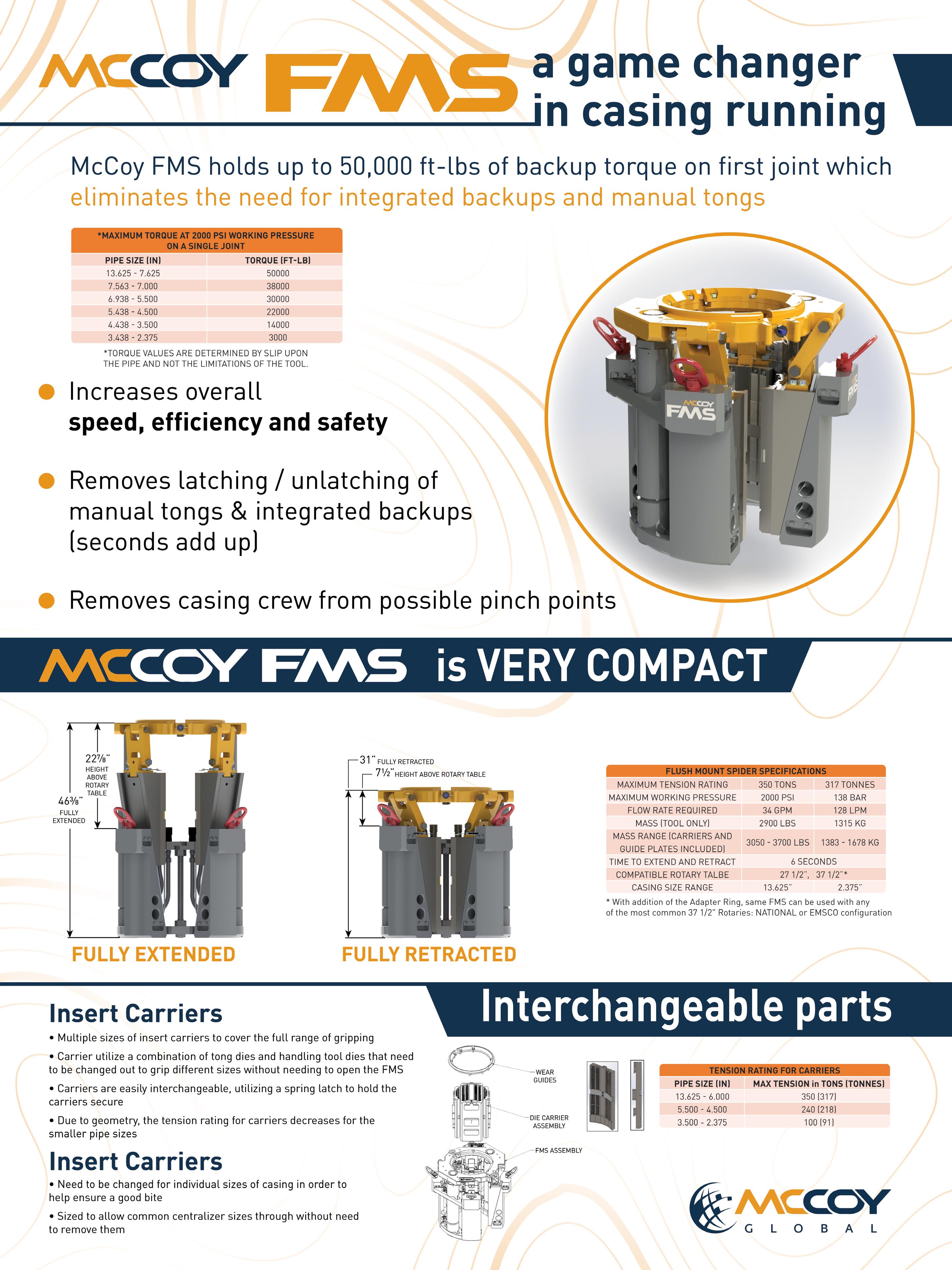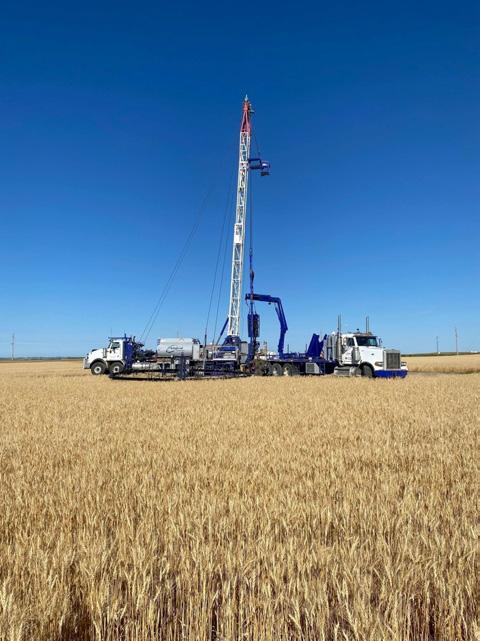OF ENERGY

PIONEERING ALBERTA’S LITHIUM INDUSTRY
E3 LITHIUM’S CHRIS DOORNBOS ON THE INCREDIBLE OPPORTUNITY TO PRODUCE LITHIUM IN THIS PROVINCE







E3 LITHIUM’S CHRIS DOORNBOS ON THE INCREDIBLE OPPORTUNITY TO PRODUCE LITHIUM IN THIS PROVINCE





olitically moderate Canadians across the country have every reason to be concerned about the federal government’s pending emissions cap on Canadian oil and gas. Just look at the financial implications.
Says the Conference Board of Canada:
• Alberta government revenues could shrink by $73 billion to $127 billion over the next 10 years, and $84 billion to $151 billion in federal revenue could vaporize over the same period.
• Between 82,000 and 151,000 jobs could disappear by the end of the decade across Canada – including between 54,000 and 91,000 in Alberta alone.
• Nominal gross domestic product (GDP) in Canada could take a shellacking of as much as $1 trillion from 2030 to 2040. Alberta’s GDP could decline by 3.8 per cent over that time.
All this is made possible by Canada’s ambitious plan to implement an emissions cap on our oil and gas sector, even while measures are already in place to continue reducing the CO2 emissions per unit of Canadian energy produced, and to achieve net-zero CO2 emissions by 2050.
It’s no wonder observers are concerned. The federal policy could put at risk Canada’s ability to supply the energy needs of our Asian allies like Japan and Korea.
While Asian demand will likely soar between 2030 and 2050, the federal plan would cap emissions by 2030, slashing output by up to 38 per cent below 2019 levels. According to the Business Council of Canada, such a move would force production cuts, potentially jeopardizing global energy security.
Organizations from Vancouver to Montreal have sounded the alarm.
The Montreal Economic Institute (MEI) is highly critical of the cap and cautions Canadians to prepare for a potential loss of domestic jobs and a decrease in tax revenues, all for a negligible environmental impact. Even worse, the MEI ballparks the cost of the cap to the economy at an astounding $6 billion annually.
The Vancouver-based Fraser Institute puts it this way: “Every credible forecast of world energy consumption indicates oil and gas will continue to dominate the global energy supply mix for decades. Constraining oil and gas production and exports in Canada would merely shift production to other regions, potentially to countries with lower environmental and human rights standards such as Iran, Russia and Venezuela.”
Regarding industry’s recent messaging to Ottawa, Calgary Chamber of Commerce CEO Deborah Yedlin told media the following: “The unified message was that the cap, as presented, is unworkable, untenable, and it’s going to increase investment uncertainty.”
Global oil demand is set to grow by 1.9 million barrels per day in 2024. Another six-plus million barrels of new supply is needed this year just to replace declining existing production.
As long as the world needs oil and natural gas, Canada should supply it. BOE
Cody Battershill is a Calgary realtor and founder / spokesperson for CanadaAction.ca, a volunteerinitiated group that supports Canadian natural resources sector and the environmental, social and economic benefits that come with it.

f you believe like I do, that the oil and gas industry is ready for even bigger gains, now is the time to get your stuff in order so you are ready to prosper in the next wave.
The evidence is clear, and the statistics don’t lie. While we are experiencing a massive push towards EVs and overall electrification, oil and gas consumption is up, not down.
It causes me to recall a quote by Joel Barker in his book, The Business of Paradigms, that goes like this: “Those who say it shouldn’t be done, should get out of the way of those who are doing it.” Nothing could be more truthful today.
Statistic – 105 million BPD is the global consumption and it’s continuing to rise. Pattern – we continue to consume, and our global thirst
for materials and durable goods produced from hydrocarbons will continue to rise. Despite all the rhetoric, oil is here for a long time.
For most of my business career I have asked a couple of key questions every time something new is presented. First, is it a trend or a movement? Trends are cool but don’t last. Movements deliver major structural and strategic change. Second, does it make sense? Is it something people will buy and put on shelf to collect dust, or will they covet, revere and use it regularly?
Right now, EVs are trendy, but infrastructure that should accompany them is not being created. The market is not responding in any meaningful way, and despite all the bluster and blow, this is not yet a movement. We still do and still will revere and regularly use oil products.

Chris Sublicki’s video, “The Uncomfortable Reality
About Energy (2019),” tells a very interesting story about the need for hydrocarbon energy, and how efficient and effective the Canadian energy industry is.
There is probably more relevant information available today, however the truth of it can’t be hidden. We live in a world that requires sources of energy, and oil and gas are the most effective, most efficient and, oh yah, let’s not forget, most economical means of delivering basic human needs. Sublicki’s video should be required learning for every Canadian – kids and adults – so they get a more balanced view of how important our energy industry is.
Back to my lead statement – those of us who are working in the exploration, development, servicing and delivery of Canada’s number one domestic product should be proud of what we do, and need to prepare for the boom that is coming.
With the tide shifting towards global awareness regarding the unreliability and inefficiency of general electrification, we should be sure to be ready. Consumerism will not wane, and in this writer’s opinion, the trendy commercialization of alternative fuel sources will not inhibit our growth.
THERE IS PROBABLY MORE RELEVANT INFORMATION AVAILABLE TODAY, HOWEVER THE TRUTH OF IT CAN’T BE HIDDEN. WE LIVE IN A WORLD THAT REQUIRES SOURCES OF ENERGY, AND OIL AND GAS ARE THE MOST EFFECTIVE, MOST EFFICIENT AND, OH YAH, LET’S NOT FORGET, MOST ECONOMICAL MEANS OF DELIVERING BASIC HUMAN NEEDS.
And not to say that renewables don’t have a space, they clearly do. Let’s just not get caught up in the rush to be trendy. Just remember that while many people are billowing about surrogate fuel sources, the world’s largest industrial nations (China, India, USA) are busy building infrastructure to burn easy-to-access carbons, primarily coal. Yet here we have the cleanest materials available to do the same. Kinda crazy, isn’t it?
So, if you have a vision of a world with effective and efficient sources of energy that include fossil fuels, here are three things to consider.
First, the next wave of growth will likely be longer with less of a “kaboom.” Instead of rushing, smart managers should focus on longer term development of corporations, including people, processes and technology.
Second, although we have automation knocking on our door, skilled people will be in high demand, and management should put more effort into developing high value skills, rather than just adding bodies. AI will not replace people. Rather it will create new and more complex skill requirements.
Thirdly, critical thinking will be key. It is the same old batch of questions: does it make sense, will it last, is it a trend or a movement, and how can I maximize my time?
Last week I watched as hundreds of cars lined up at a local high school to pick up students, each student wearing synthetic clothing, most carrying a backpack or bag made from manmade materials, staring at their plastic iPhone. All the environmental bullying, shaming and name calling hasn’t changed a thing. Oil and gas is here to stay for a long time.
The stars are about to align in our industry. We have a powerful voice, smart people, innovation and a social and business environment in the province to push us back up the ladder. I, for one, look forward to the climb! BOE


It’s tempting to chalk business success up to being in the right place at the right time.
To hold the notion that a little (or a lot of) luck can make all the difference. Though luck is undoubtedly always involved to some degree, great success befalls to the business that has positioned itself and is nimble enough to take advantage of luck’s opportunities. Put another
way: everyone experiences a bit of luck, it’s what you do with it that matters.
For E3 Lithium, it’s that perfect combination of entrepreneurial vision, focused perseverance, attention to opportunity and – yes – luck, that has resulted in the promising position the company finds itself in today.

“We’re doing really good,” confirms president and CEO Chris Doornbos. “In the past couple of years, the company’s grown from a team of five people developing an R&D project, to developing a new technology and working with new resources, to a team of 30 people today and growing. We’ve got an office in Calgary and we’re looking to build a lithium processing plant. The company has solidified itself as a leader in lithium in Alberta and Canada.”
Formed in 2016, E3 was created to take advantage of an untapped opportunity in Alberta: lithium in underground saline formation water. “We knew there was lithium in these brines in southern Alberta, but no one had really looked at it,” Doornbos explains. “The opportunity was to see how we could develop this into a producing asset, which is something we do in Alberta every day.”
At that time, very little lithium was produced across the globe, particularly in North America. With the advent and commercialization of the electric vehicle in particular, the demand for lithium has exploded in recent years.
“Most of the lithium in the world today is produced in mines in the outback of Australia, and then processed in China,” Doornbos says. “China controls close to 80 per cent of all the battery quality lithium products the world makes. So to have a secure supply of a domestic source of lithium for the North American and European supply chain has become increasingly important.”
E3 uses a different and unique source for lithium production. “We pump it out of a well, like oil, but it’s just water,” he explains, “and we use direct extraction technology that allows us to remove the lithium chemically. Then we refine it and produce a battery grade lithium product.”

The company pumps this briny water from its large landholdings in the Leduc Aquifer (located south of Edmonton and north of Calgary), an expansive ancient reef complex occurring over two kilometres below ground level. Over 4,000 wells have been drilled in E3’s broader project area over a 78-year oil and gas development period.
“The resource base in just the Bashaw district alone is five times larger than the entire rest of Canada’s resource at that level combined,” Doornbos says. “And that’s just ours. Alberta is, in my opinion, the largest untapped source of lithium on the planet. It can support a lithium industry that will compete globally in terms of total production capabilities.”
E3 developed its own chemical process – called direct lithium extraction (DLE) – and has tested other similar technologies developed by third parties. “We’ve tested four third-party technologies just to cover our bases,” he explains. “We’ve now selected an advanced process that we’ll take commercial, and we’re working through the engineering of that now. We’ve had some pretty big successes on that front.”
The fact that there are over 4,000 wells drilled in the Leduc from oil and gas exploration on E3’s property means there is a ton of data the company can use. Nevertheless, in 2022 the company drilled two more wells and repurposed an existing oil and gas well from an area in the aquifer where lithium concentration data was lacking. “These confirmed the lithium grades in our production zone, and it was a great production test,” Doornbos says enthusiastically. “It was pretty impactful to allowing us to continue.”
In 2023, the company did a successful field pilot plant, another huge hurdle in the journey from R&D project to resource development operation. It tested its own DLE as well as the four thirdparty technologies. “Five technologies were all demonstrated to be technically feasible for the project,” Doornbos says. “And that is a huge benefit because now we have optionality. The risk of the technology, while not eliminated completely, is significantly reduced.”
“The success of our field pilot plant inspired confidence in both the market and in our internal


team to be able to spend the time and energy to design and then build a plant,” he continues. “We were happy with the results and the process we’re going forward with. It moved us from being a resource developer, to a technology developer, back to a resource developer. Brought us back to our roots.”
Now, E3 is focused on building a full-sized plant in its Bashaw landholdings, called the Clearwater Project. E3’s Preliminary Economic Assessment, released in 2020, outlined an estimated life of 20 years at 20,000 tons of lithium per year produced, and a construction start date in 2026. These numbers will be updated with the release of the company’s Prefeasibility Study, which E3 is aiming to release late in Q2.
 Stephen D. Smith CEO of Strike Group
Stephen D. Smith CEO of Strike Group
“Our Bashaw district alone is likely capable of producing up to 150,000 tons per year,” he notes. “So there’s probably multiple plants we can build there.”
E3 also owns the Rocky development area, and some land in Saskatchewan.
While the majority of E3’s staff are working on designing and, then hopefully building, the first lithium plant, the other priority is looking for customers.
The global lithium market today is primarily made up of battery and car companies who buy lithium carbonate or hydroxide on direct sale contracts. E3 will be looking to refine its customers from a long list of multinational corporations. Doornbos notes: “Just looking locally, the list of companies that are building battery facilities in Canada and the U.S. is pretty long, most of these coming from South Korea, Japan and Europe.”
E3 will be able to produce either lithium carbonate or lithium hydroxide, depending on what its customers want.
Sustainable operations will be incorporated into the plant, including looking to completely eliminate any freshwater consumption other than drinking water. “We are also committed to immediate reclamation of the majority of our well pads and using centralized pads for a smaller footprint,” he explains. “Those are best practices in Alberta.”
One challenge will be the carbon footprint of the plant: “The source of power in Alberta is not the cleanest in terms of carbon intensity. And our lithium products will be ranked based on this. So we’re looking at implementing the use of Alberta technologies for carbon capture storage to reduce the emitted carbon as the production matures.”
As a small company with a passionate team, E3 focuses on a couple of community initiatives to support every year. “Usually it’s time more so than money, but everyone on the team is very passionate about giving back.”
“We’re excited to be building a first-of-its-kind operation in Alberta,” Doornbos reflects, “however it looks and feels a lot of like oil and gas. So it’s very
THE GLOBAL LITHIUM MARKET TODAY IS PRIMARILY MADE UP OF
BATTERY AND CAR COMPANIES WHO BUY LITHIUM CARBONATE OR HYDROXIDE ON DIRECT SALE CONTRACTS. E3 WILL BE LOOKING TO REFINE ITS CUSTOMERS FROM A LONG LIST OF MULTINATIONAL CORPORATIONS. DOORNBOS NOTES: “JUST LOOKING LOCALLY, THE LIST OF COMPANIES THAT ARE BUILDING BATTERY FACILITIES IN CANADA AND THE U.S.
IS PRETTY LONG, MOST OF THESE COMING FROM SOUTH KOREA, JAPAN AND EUROPE.”
familiar to the people who work at E3 and to the locals who we’ll be working around. It’s familiar to the companies we’ll be hiring. And that’s important. Because it is a new commodity for Alberta, so there’s a diversification angle, but we don’t have to diversify the workforce.”
“We get to diversify the economy by producing something that’s not related to hydrocarbons in terms of its market,” he continues. “So we can keep people employed when other companies aren’t hiring. That’s pretty exciting.”
While there certainly is something to be said for being in the right place at the right time, E3’s success today is largely due to the foresight, guts and hard work of Doornbos and everyone on the team. Indeed, building a whole new industry doesn’t just happen by pure luck. BOE

In the dynamic realm of the oil and gas industry, the provision of cutting-edge, forward-thinking and meticulously-crafted oilfield services stands as an indispensable cornerstone. Such offerings not only signify a commitment to innovation and excellence but also serve as the bedrock upon which the esteemed reputation of ProTorque Energy is firmly built.
“We have been serving the oil and gas industry since 2004,” says the upbeat Landon McDonald, ProTorque president. “We are fiercely proud of our expertise, our exceptional client relationships, and we continue to evolve and grow.”
“ProTorque is no longer just a tubular running company. We are now an international TRS and midstream oil field construction and maintenance company. Our vision is to be an industry-leading TRS and midstream construction company that provides integrated solutions to operators.”
Today more than ever, safety, efficiency and service quality are ProTorque’s focus areas.
In 2024 more wells are drilled with fewer rigs which result in quicker job turnarounds. ProTorque constantly adapts, leveraging technology such as predictive maintenance tools to ensure equipment condition and up-time.


A key part of ProTorque’s exceptional oil and gas industry reputation is being up-to-date, especially with the tremendous impact of technology. It is a must and it is critical. The latest available technologies are incorporated into the equipment, recording and reporting real time data, to provide ProTorque and its customers with the most effective figures.
“So much of technical casing running involves high torque connections, exotic metals used in tubulars and technology installed downhole; we need to make sure our equipment and processes are best-in-class,” he explains.
“The oil and gas industry is undergoing an exciting digital transformation,” explains Jeff Weitzel, ProTorque’s plugged-in COO. “There are tremendous advancements such as artificial intelligence, big data analytics, automation and more. The innovations are driving industry efficiency improvements, cost reductions and enhanced safety measures across the value chain.”
In oilfield services, data acquisition has been a major push and driven by operator’s needs, to become as efficient as possible. ProTorque is leveraging data acquisition related to connection make-up and casing run metrics to improve crew competencies and enhance services to their customers.







The industry-respected company also leverages its supplier relationships to access the latest technologies and innovative solutions, to enhance safety, operational efficiency and service quality. “It is a priority,” he adds.
While innovative technology and the delivery of highquality oilfield services are the critical company focus, the key to the ProTorque success story is – people!
“Our employees are the true driving force behind all we do and the cornerstone of our competitive edge,” vice president Michael Angelozzi says with pride. “We attract and hire local leadership with a deep knowledge of the client base and workers in the areas where they operate.”
He raves about the superb ProTorque team of skilled professionals and their extensive industry experience. “It is their dedication, expertise and passion for excellence that propels the company forward, ensuring that we deliver unparalleled solutions and services to our clients every day.
“Our team’s innovative spirit and unwavering commitment to quality set ProTorque apart in the industry. We consistently exceed expectations and raise the bar for performance, allowing us to excel.”


Labour pools have changed. There is a want and need for the company to provide a balanced approach to being an employment leader in oilfield services with its employees, contractors and clients.
“Employees want to be respected, heard and supported through their career progression in oil field services,” McDonald points out.
“No longer are they exclusively just worried about





making the most income in the shortest time possible.” He notes that, like in many industries, work/life balance is a priority. Improvements in training, technology and education of multi-skilled service technicians creates flexibility.
Angelozzi, Weitzel and McDonald attribute much of the company’s success to a distinctive ‘business partner’ dynamic, particularly in essential planning endeavors aimed at securing optimal outcomes for their customers.
• The exceptional ProTorque reputation is also a vital part of the company’s edge and difference.
• A proven track record for delivering high-quality oilfield services, backed by a team of skilled professionals with extensive industry experience.
• The proactive relationships with suppliers in order to efficiently test and develop new technologies.
And the company’s “Proven Process” identifies, reports and allows for collaboration at each step, assuring the best possible outcome for ProTorque customers.
The company is proactive and emphasizes its “Proven Process.” It is the tremendously effective way to identify specific and unique project requirements, collaborate to establish personnel and equipment requirements, propose ways to complete the job effectively, and efficiently execute.
“It’s what we do and how we do it,” Jeff Weitzel emphasizes.




RANGE
FEATURES
ADVANCED MANUFACTURING PROCESSES, PRECISION POWDER COAT PAINT TECHNOLOGY AND EXTENSIVE ENDURANCE TESTING

CommandPlus cab for best in class operator space particulate filter (DPF) meaning regeneration
40º ARTICULATION WITH HIGH MOUNTED STEERING CYLINDERS AND HOSES CLAMPED AWAY FROM PINCH POINTS



and comfort
n No diesel particulate filter (DPF) meaning
no periodic regeneration
n No diesel particulate filter (DPF) meaning
no periodic regeneration
n High torque at low RPM for reduced fuel consumption and increased productivity


n Chassis-integrated tanks to minimize the chance of impact damage
low RPM for reduced fuel consumption and productivity
n High torque at low RPM for reduced fuel consumption and increased productivity
n Chassis-integrated tanks to minimize the chance of impact damage
n Single-piece hood design for fast access to the entire engine bay
Chassis-integrated tanks to minimize the chance of hood design for fast access to the bay system tracks machine efficiency, reports status, and delivers service alerts

n JCB’s LiveLink system tracks machine efficiency, reports location and status, and delivers service alerts
n Single-piece hood design for fast access to the entire engine bay
n JCB’s LiveLink system tracks machine efficiency, reports location and status, and delivers service alerts
EDMONTON BRANCH
18420 118A avenue
Edmonton, AB (780) 474-9900
CALGARY BRANCH
8010 40 Street SE
Calgary, AB (403) 301-0041




Amped Well Servicing; A division of Amped Energy Services, was established in May of 2022 as a result of an increased requirement for service equipment and service professionals in the Saskatchewan and Manitoba Oil and Gas markets. Amped Well Servicing proudly teamed up with well known service professionals local to this market, and with newly refurbished rod service equipment, began the operation in Swift Current, Saskatchewan. Since inception, Amped Well Servicing has expanded operations to Western Manitoba and Southeast Saskatchewan.



Randal Syverson Operations Manager, says, “The team we have in place has been in the area since 2009. We understand the needs of the producers here. We understand the communities here.” The local management really does understand the value of community having been involved in coaching minor sports and volunteering for various local initiatives. They employ local people and support their efforts as well to take part in local activities and sport.


Conventional sucker rod
Pulling and running rod strings
Fishing rods
Changing insert pumps
Changing PCP rotors
Light well interventions
Killing wells
Flushing production
Well abandonment

Wellhead valves
Driveheads
Stuffing boxes
Polish rods
Pressure�testing wells
Spacing and re spacing
Coiled rod jobs
Rod string changes

“Understanding what it means to be local involves embracing community values, engaging with local businesses, and contributing to the well being of the area. It's about forming connections, supporting local initiatives, and being an active participant in the growth and sustainability of the community. ”












